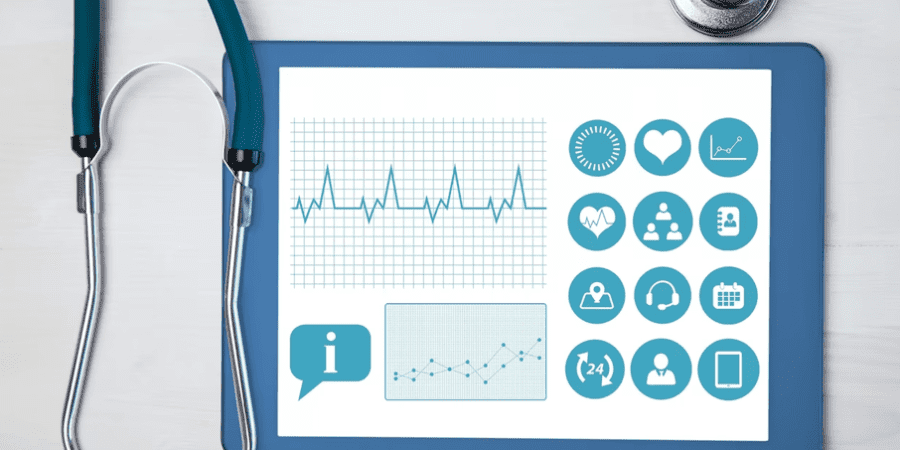Optimizing Chronic Care Management with Remote Technologies
Chronic diseases are a significant global healthcare challenge, affecting millions of people worldwide. Managing chronic conditions requires continuous monitoring, frequent check-ups, and timely interventions to prevent complications and improve patient outcomes. However, the traditional healthcare model often falls short in providing efficient and convenient care for individuals with chronic conditions. This is where remote technologies come into play. With the rapid advancements in remote technologies, healthcare providers now have the opportunity to optimize chronic care management through remote monitoring and telemedicine solutions. In this blog post, we will explore the various remote technologies that are transforming chronic care management and discuss their potential benefits and challenges.
Telemedicine: Breaking down geographical barriers
Telemedicine has emerged as a game-changer in chronic care management. By utilizing video consultations, patients can connect with their healthcare providers from the comfort of their own homes. This eliminates the need for in-person visits, particularly for routine check-ups or follow-ups, reducing travel time and costs for patients. Telemedicine also enables healthcare providers to reach patients in remote or underserved areas, expanding access to quality care.
Moreover, telemedicine facilitates continuous communication between patients and healthcare professionals, fostering better care coordination and patient engagement. Patients can discuss symptoms, ask questions, and receive timely advice, leading to improved medication adherence and self-management.
Remote Patient Monitoring (RPM): Real-time tracking and intervention
Remote Patient Monitoring (RPM) involves the use of devices to collect and transmit patient data to healthcare providers. These devices can include wearable sensors, glucometers, blood pressure monitors, and more. RPM enables healthcare providers to remotely monitor vital signs, medication adherence, and disease-specific indicators. This real-time data empowers healthcare professionals to detect any deviations from the baseline, identify potential complications, and intervene promptly.
RPM not only improves the accuracy and timeliness of diagnosis but also enhances treatment outcomes by allowing healthcare providers to adjust medication dosages or treatment plans based on the collected data. Patients benefit from personalized care plans and gain a sense of empowerment and control over their health.
Digital Health Applications: Empowering self-management
Digital health applications, such as mobile apps and web-based platforms, play a crucial role in empowering patients to self-manage their chronic conditions. These applications provide a range of features, including medication reminders, symptom tracking, lifestyle management tools, and educational resources. By using these apps, patients can actively participate in their care, monitor their progress, and make informed decisions regarding their health.
Digital health applications can also facilitate secure communication between patients and healthcare providers, allowing for seamless information sharing and personalized support. Additionally, the integration of artificial intelligence (AI) algorithms can analyze user-generated data and provide tailored recommendations to patients, further enhancing their self-management capabilities.

Benefits of Optimizing Chronic Care Management with Remote Technologies
- Improved patient access and convenience
Remote technologies eliminate geographical barriers and enable patients to receive care regardless of their location. This improves access to healthcare services, especially for those in remote or underserved areas. Patients can schedule appointments conveniently, reducing the need for transportation and minimizing wait times.
- Enhanced patient engagement and self-management
Digital health technologies empower patients to actively participate in their care. They can access educational resources, monitor their progress, and manage their medications and symptoms. This increased engagement leads to better treatment adherence, lifestyle modifications, and overall health outcomes.
- Timely interventions and reduced hospitalizations
Remote patient monitoring allows healthcare providers to detect early warning signs of complications, enabling timely interventions. This proactive approach can prevent hospitalizations and emergency department visits, resulting in cost savings for both patients and healthcare systems.
- Efficient care coordination
Remote technologies facilitate seamless communication between patients and healthcare providers, improving care coordination and reducing the risk of miscommunication. This leads to more efficient healthcare delivery, reduced administrative burden, and enhanced patient satisfaction.
Challenges Encountered with Remote Technologies
- Technical barriers
Reliable internet connectivity, access to devices, and digital literacy can hinder the widespread adoption of remote technologies, particularly among underserved populations or elderly individuals.
- Privacy and security concerns
Remote care involves the transmission and storage of sensitive patient data. Ensuring data privacy and maintaining robust security measures is important to protect patient confidentiality and maintain trust in remote technologies.
- Regulatory and reimbursement issues
Policies and reimbursement models need to be updated to support and encourage the use of remote technologies in chronic care management. Clear guidelines and standards should be established to ensure the quality and safety of remote healthcare services.
Optimizing chronic care management with remote technologies has the potential to revolutionize healthcare delivery. With technological breakthroughs, the quality of life has substantially improved. To keep track of your health or the health of those you love, think about investing in these essential tools. Join us to spread wellness to the people around you.


